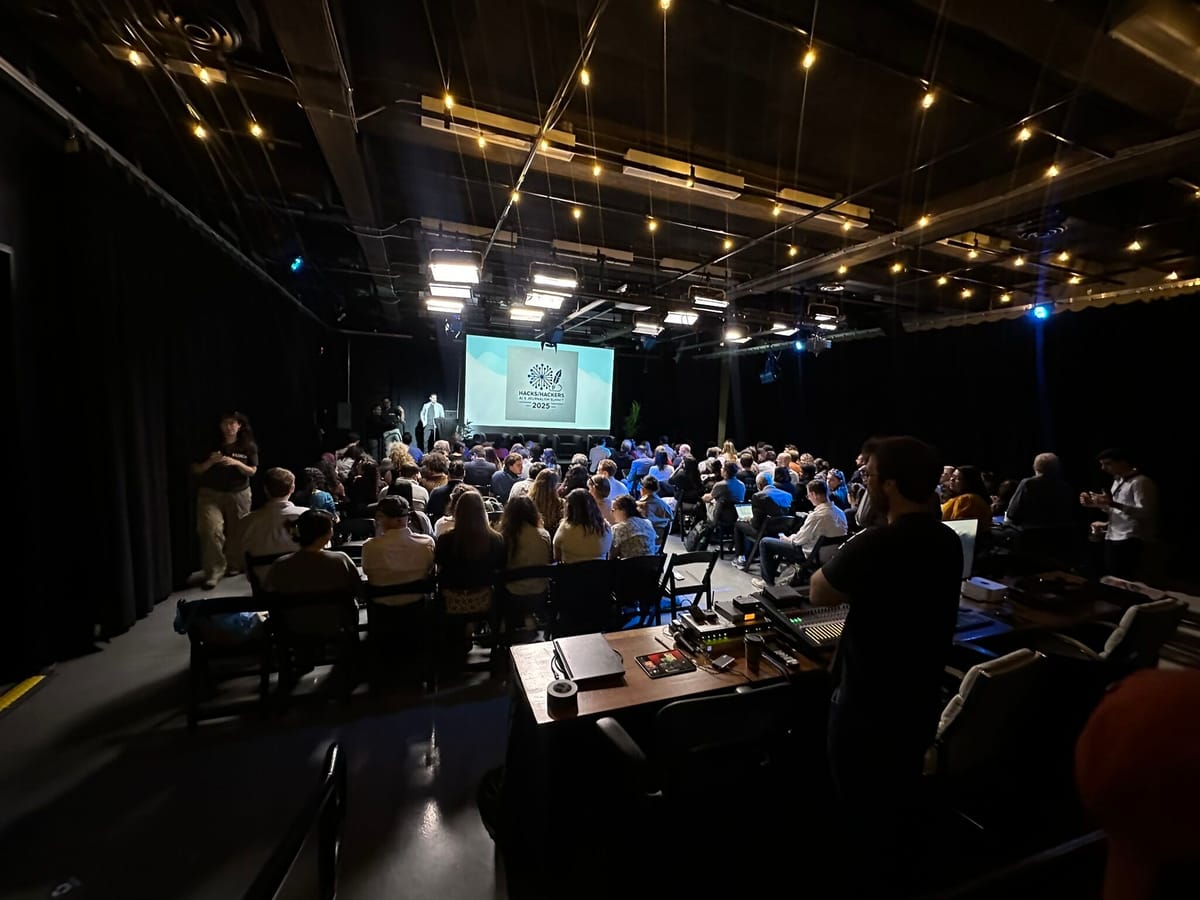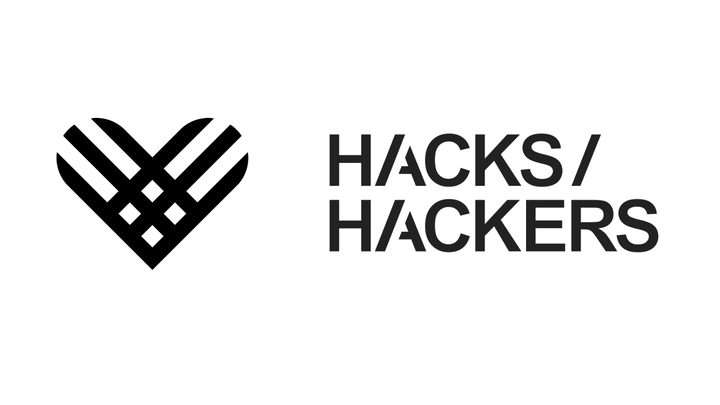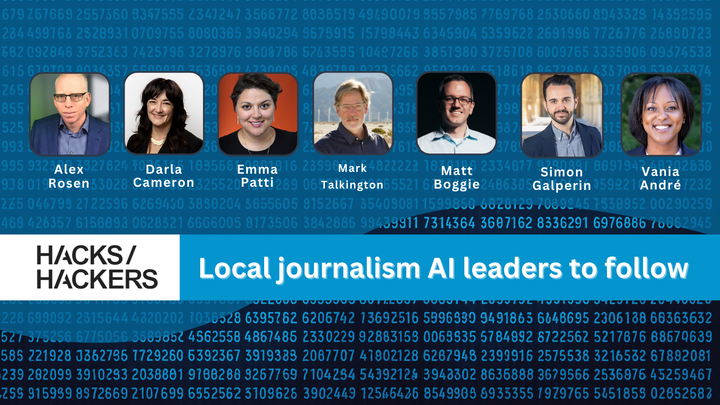Key insights from the Hacks/Hackers AI x Journalism Summit
Many of the conversations shifted from ‘what if’ to ‘what can’ and what might be possible by implementing AI in the newsroom.

Over 200 people from major U.S. newsrooms, local news outlets, tech companies and product teams gathered from May 7–8 for the first Hacks/Hackers AI x Journalism Summit in Baltimore. Over two days in meeting space provided by hosts The Real News Network, Summit participants explored how to tackle AI’s societal impact and apply its tools and practices to their own journalism as democratic institutions are under attack amid an AI revolution that will reshape the information ecosystem and economy.
Presenters shared learnings and research on how to develop AI strategy and disclose use of the technology to audiences, surveyed government efforts worldwide to keep AI under control, and taught how to prototype AI agents that can research and process information. Panelists talked about how to comprehensively document government meetings and state legislatures with the help of AI, dove into a case study on using AI to identify coverage trends in newsroom archives and discussed the need to build tools to measure AI’s effectiveness.
Central to conversations was the recognition that the arrival of AI technology that can improve itself at an exponential rate is imminent. “As we navigate the potential emergence of super-intelligent AI in as soon as a couple years, our work — the stories we tell and products we build — will determine whether AI amplifies democracy or undermines it,” Hacks/Hackers co-founder Burt Herman said as he opened the event alongside Hacks/Hackers Strategic Adviser Paul Cheung.
Speakers and participants at the Summit included editors and managers from international news organizations The Associated Press, The New York Times and The Washington Post, plus local newsrooms including the Philadelphia Inquirer and the Baltimore Banner. Foundations and other organizations that support journalism were present at the Summit, including MacArthur Foundation, Joyce Foundation and Lenfest Institute for Journalism. Faculty and researchers from Stanford, Harvard, Columbia and City University of New York’s journalism school also participated in the Summit, as well as representatives from the tech platforms powering the information ecosystem, such as Google, Yahoo, Automattic and Hugging Face.
“The most energizing part was that we're no longer almost all trying to emulate the one or other well-funded legacy outlet,” Patrick Boehler, a speaker and founder of Gazzetta, a Tallinn- and New York-based media research lab, wrote on LinkedIn. “There's a collective learning process and navigation of new realities happening organically in beautiful messiness.”
One theme at the gathering was that news coverage of AI should not be siloed on the business desk. AI overlaps with every news beat, presenters noted, and recognizing this will also help AI work better as it is applied for journalists’ work too.
“We want to see [AI coverage] in healthcare and climate journalism and every area,” said Sawyer Bernath of the Tarbell Center for AI Journalism, a non-profit organization that looks at the increasing role that AI plays in journalism during its summit session. “It should not just be in tech and national security journalism. AI is broader than that.”
At the same time, there were concerns raised throughout the event that training data used for large language models can have biased data that could distort reporting. Journalists must be mindful about fairness, accuracy and hidden influence in AI-generated content.
“There are so many possibilities for any kind of errors, bias, getting things not right and there needs to be vigilance,” Todd Beamon, an independent journalist based in Washington, said between sessions as he flipped through his stapled copy of the program agenda. “AI is so vast and controlled by a small group of people and so many people don’t know about its potential.”
The journalism world these days isn’t exactly a rosy one because of an increasingly shaky business model and an adversarial political climate, but participants left feeling somewhat hopeful at the prospect of AI opportunities.
Subramaniam (Subbu) Vincent, director of the Journalism and Media Ethics program at Santa Clara University in California, pointed out a silver lining in the news industry and how LLMs can do a better job of pushing forward better journalism.
“Despite the frustration about news, there is a lot of fantastic and truthful storytelling going on in news cycles from local to international. But it is getting lost because news feed tech cannot easily separate the valuable from the attention-grabbing: The boots-on-the-groundwork from rapidly-derived SEO rewrites,” he said in his own takeaway. “Diverse and authentic voices from the homogeneously scripted. To me, LLMs present a good test case for upping the standards game on recommender systems, labeling, signals, and so forth.”
Tiny News Collective’s Madison Karas noted a general shift in the way people were talking about AI. “Many of the conversations shifted from ‘what ifs’ to ‘what can’ and ‘what might’, which was refreshing in contrast to the vendor fatigue and AI slop we’ve all been navigating the past couple of years,” Karas said.
In his own recap on LinkedIn, Marco Cummings, a digital producer at The Denver Gazette, saw the conference come to an end that was all too fitting, writing. “We ended on a high note with a Rock Paper Scissors battle royale — part strategy, part chaos, and a surprisingly fitting metaphor for the state of media today," said Cummings. "Fast-moving, unpredictable, and full of people trying to make the smartest next move.”



